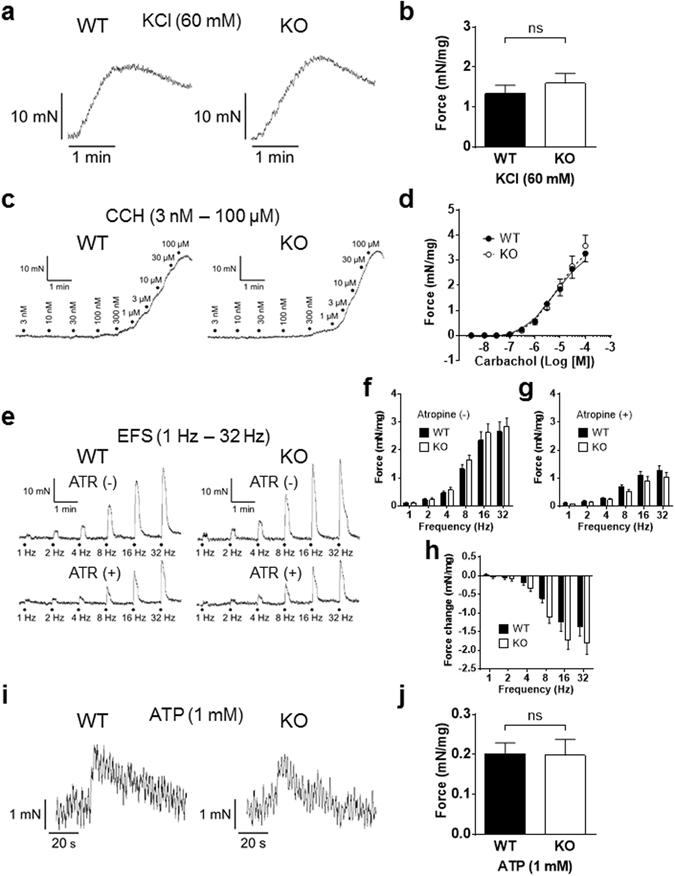Figure 4.

Contractile responses to KCl, carbachol, electrical field stimulation (EFS) or ATP, of in vitro bladder muscle strips. (a) A contraction of bladder muscle strip from a WT mouse (left) or a P2Y6-KO mouse (right) was evoked by 60 mM KCl to test its viability. No difference in contraction force evoked in response to 60 mM KCl was found between WT (n = 7) and P2Y6-KO (n = 9) mice (P = 0.66, Mann-Whitney U test) (b). (c) A contraction of bladder muscle strip from a WT mouse (left) or a P2Y6-KO mouse (right) in response to graded concentrations of carbachol (3 nM to 100 µM). Concentration-response curves of WT (n = 9) and P2Y6-KO (n = 7) mice were compared, showing no differences between the 2 groups (P = 1.00, Mann-Whitney U test) (d). (e) EFS-evoked contractions of bladder muscle strips from a WT mouse (left) and a P2Y6-KO mouse (right) (by EFS at 1 Hz, 2 Hz, 4 Hz, 8 Hz, 16 Hz, and 32 Hz) were compared in the absence or presence of atropine (ATR, 10 µM). There were no differences between the 2 groups (WT, n = 7 and P2Y6-KO, n = 9) in contraction forces evoked by EFS in either the absence (P = 0.79, repeated measures two-way ANOVA) (f) or presence (P = 0.54) (g) of atropine. In addition, no difference in force change by atropine of contraction evoked by EFS was found between the 2 groups (P = 0.18) (h). (i) A contraction of bladder muscle strip from a WT mouse (left) or a P2Y6-KO mouse (right) was evoked by 1 mM ATP. There were no differences between WT (n = 7) and P2Y6-KO (n = 9) mice in contraction forces evoked in response to 1 mM ATP (P = 0.73) (j).
